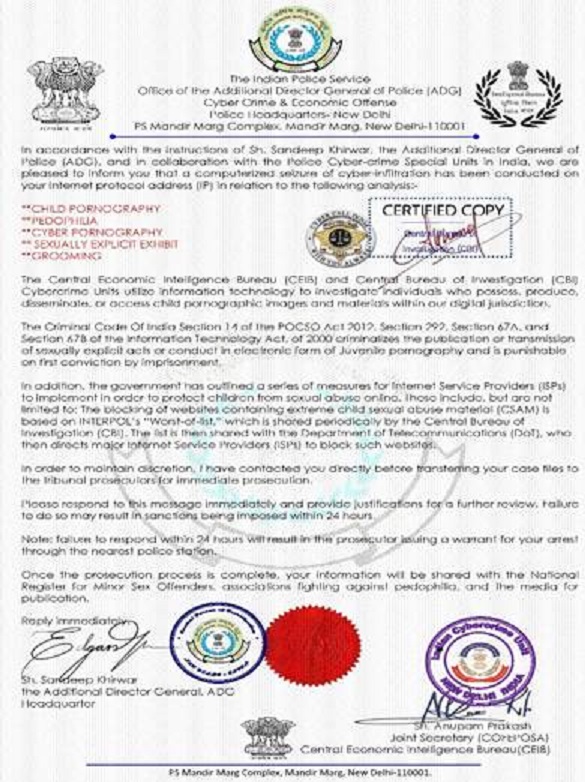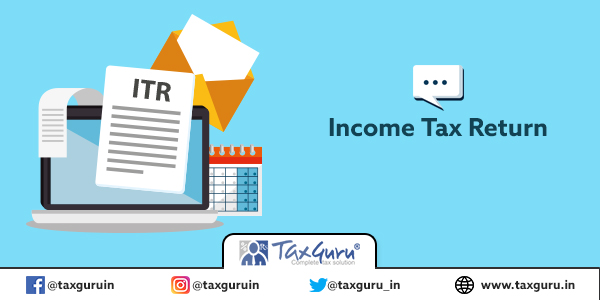Case Law Details
Sesa Goa Limited Vs Commissioner of Customs (CESTAT Hyderabad)
The argument of the appellant is that out of this FOB value, the element of duty also must be deducted to determine the assessable value. In other words, their argument is that the FOB must be taken as cum duty price and the assessable value must be calculated backwards so that whatever is charged by them from the overseas buyers must be treated as including the export duty. A plain reading of Section 14 would not show such a change in the valuation methodology is permissible under the law. The appellant cannot, on their own, claim a new valuation methodology for their exports when the law specifically lays down that transaction value at the place of export is the assessable value for determining the export duty. But, it appears that a wrong practice was in vogue of taking the FOB price as cum duty price upto 2008. This has been modified by Circular No. 18/2008-Cus, dated 10.11.2008 by CBEC in which para 5 reads as follows:
“It has also been decided that with effect from 1st January, 2009, the practice of computation of export duty shall be changed. It is proposed that for the purposes of calculation of export duty, the transaction value, that is to say the price actually paid or payable for the goods for delivery at the time and place of exportation under section 14 of Customs Act 1962, shall be the FOB price of such goods at the time and place of exportation. For example if the transaction is at Rs 100 FOB, and the duty is 15%, the export duty will be 15% of FOB price, that is Rs 15. In case the transaction is on CIF basis, the FOB price may be deduced from the CIF value, and then the export duty be calculated as 15% of such FOB price.”
We find that an identical case in respect of the same appellant came up before the Tribunal, Kolkata [2014(313) ELT 317 (Tri.-Kolkata)] in which it has been categorically held that the transaction value i.e. FOB price cannot be treated as cum duty price under section 14 of Customs Act, 1962 for the purpose of calculation of export duty.
FULL TEXT OF THE CESTAT JUDGEMENT
1. All these appeals are filed by the appellant on the same issue and hence are being disposed of together.
2. None appeared on behalf of the appellant. It is seen from the records that nobody has been appearing in the past several hearings as well on behalf of the appellant. Hence, heard Ld. DR and perused the records. As the matter pertains to 2011, the same is being disposed of even in the absence of any representation of the appellant as it is very old and falls in a very narrow compass.
3. The appellant exported iron ore fines under various shipping bills. On export of Iron Ore Fines, there was an export duty @ 5% advalorem during the relevant periods. Shipping bills were filed and duty was paid accordingly. Thereafter, the appellant challenged the assessments of the shipping bills before the first appellate authority, arguing that the amount which they have received from their customers on FOB basis must be taken as cum duty price, accordingly the assessable value must be recalculated and amount of duty must also be re-calculated. Not agreeing with the submissions of the appellant, the first appellate authority has rejected their appeals. Hence these appeals.
4. Customs duty is levied under section 12 of the Customs Act, 1962 which states that “except as otherwise provided in this Act, or any other law for the time being in force, duties of customs shall be levied at such rates as may be specified under Customs Tariff Act, 1975 or any other law for the time being in force, on goods imported to India or exported from India”. Thus, Section 12 is the charging section for levy of customs duty and the duty has to be levied as per the Customs tariff. These duties are levied either based on quantity (specific rate of duty) or value (advalorem rate of duty).
5. When the duty has to be levied based on the value, the value of such goods has to be determined in terms of Section 14 of the Customs Act, 1962, read with, if applicable, Customs Valuation Rules. For the purpose of this case, sub section 1 of Section 14 is relevant which reads as follows:
“For the purposes of the Customs Tariff Act, 1975 (51 of 1975), or any other law for the time being in force, the value of the imported goods and export goods shall be the transaction value of such goods, that is to say, the price actually paid or payable for the goods when sold for export to India for delivery at the time and place of importation, or as the case may be, for export from India for delivery at the time and place of exportation, where the buyer and seller of the goods are not related and price is the sole consideration for the sale subject to such other conditions as may be specified in the rules made in this behalf:
Provided that such transaction value in the case of imported goods shall include, in addition to the price as aforesaid, any amount paid or payable for costs and services, including commissions and brokerage, engineering, design work, royalties and licence fees, costs of transportation to the place of importation, insurance, loading, unloading and handling charges to the extent and in the manner specified in the rules made in this behalf:
Provided further that the rules made in this behalf may provide for,—
(i) the circumstances in which the buyer and the seller shall be deemed to be related;
(ii) the manner of determination of value in respect of goods when there is no sale, or the buyer and the seller are related, or price is not the sole consideration for the sale or in any other case;
(iii) the manner of acceptance or rejection of value declared by the importer or exporter, as the case may be, where the proper officer has reason to doubt the truth or accuracy of such value, and determination of value for the purposes of this section:
Provided also that such price shall be calculated with reference to the rate of exchange as in force on the date on which a bill of entry is presented under section 46, or a shipping bill of export, as the case may be, is presented under section 50.”
6. As can be seen from the above, in case of imports, it is the price actually paid or payable for the goods at the time of place of importation is relevant and in case of export duty the price actually paid or payable for the goods for export out of India for delivery at the time of place of exportation is relevant. The other aspects such as the buyer and seller being not related and price being the sole consideration of sale are not in dispute at all in this case. In international trade sales are as per INCOTERMS which lay down internationally accepted forms of transactions. There are several such terms of which the most important are FOB (Free on Board), C&F (Cost and Freight) and CIF (Cost Insurance and Freight). FOB refers to Free on Board that means the moment the goods are put on board the vessel, the seller is free i.e., all costs incurred after the goods are put on board are on the buyer’s account. Therefore, the freight, transit insurance, etc. are on account of the buyer. C&F refers to the FOB price + cost of shipping from the place of export to the place of import. Thus, this cost includes the FOB price + the freight. CIF includes the FOB price + freight + transit insurance. Contracts can be entered into between the buyers and sellers in terms of FOB, C&F and CIF or any other terms. The question which arises is which of these is the correct transaction value as far as imports and exports are concerned for valuation under section 14 of the Customs Act, 1962. Section 14 emphasizes place of importation or the place of exportation. In case of imports, the place of importation is the Indian Port through which the goods are imported and in case of exportation, it is the Indian Port through which the goods are exported. As per Section 1 of the Customs Act, it applies only to India and not beyond and for this reason also the Indian Ports should be treated as relevant in order to harmoniously interpret Section (1) of the Customs Act with Section (14).
7. When the goods are imported all costs up to the Indian Port include the transaction value of the goods (FOB) as well as the freight incurred and the transit risk in the form of transit insurance until the goods reach the Indian Port. In fact, even the landing cost i.e., costs involved in landing the goods etc. are also included in the assessable value in case of imports. Therefore, the value for the purpose of imports is CIF value plus cost of landing. The present case is of exports. In case of exports, the cost of freight and transit insurance are not part of the transaction value at the Port of export i.e. the Indian Port where the goods are exported. It includes only the Free on Board (FOB) value. This is the value for the purpose of Section 14 and export duty must be calculated on this FOB value.
8. The argument of the appellant is that out of this FOB value, the element of duty also must be deducted to determine the assessable value. In other words, their argument is that the FOB must be taken as cum duty price and the assessable value must be calculated backwards so that whatever is charged by them from the overseas buyers must be treated as including the export duty. A plain reading of Section 14 would not show such a change in the valuation methodology is permissible under the law. The appellant cannot, on their own, claim a new valuation methodology for their exports when the law specifically lays down that transaction value at the place of export is the assessable value for determining the export duty. But, it appears that a wrong practice was in vogue of taking the FOB price as cum duty price upto 2008. This has been modified by Circular No. 18/2008-Cus, dated 10.11.2008 by CBEC in which para 5 reads as follows:
“It has also been decided that with effect from 1st January, 2009, the practice of computation of export duty shall be changed. It is proposed that for the purposes of calculation of export duty, the transaction value, that is to say the price actually paid or payable for the goods for delivery at the time and place of exportation under section 14 of Customs Act 1962, shall be the FOB price of such goods at the time and place of exportation. For example if the transaction is at Rs 100 FOB, and the duty is 15%, the export duty will be 15% of FOB price, that is Rs 15. In case the transaction is on CIF basis, the FOB price may be deduced from the CIF value, and then the export duty be calculated as 15% of such FOB price.”
9. We find that an identical case in respect of the same appellant came up before the Tribunal, Kolkata [2014(313) ELT 317 (Tri.-Kolkata)] in which it has been categorically held that the transaction value i.e. FOB price cannot be treated as cum duty price under section 14 of Customs Act, 1962 for the purpose of calculation of export duty. Similar decision was also taken by the same Bench as reported in [2016(335)ELT 745 (Tri.-Kolkata)]. In view of the above, we find that the appeals are liable to be rejected and we do so.
10. The impugned orders are upheld and the appeals are rejected.
(Pronounced in the Chamber on 18.03.2020)



























